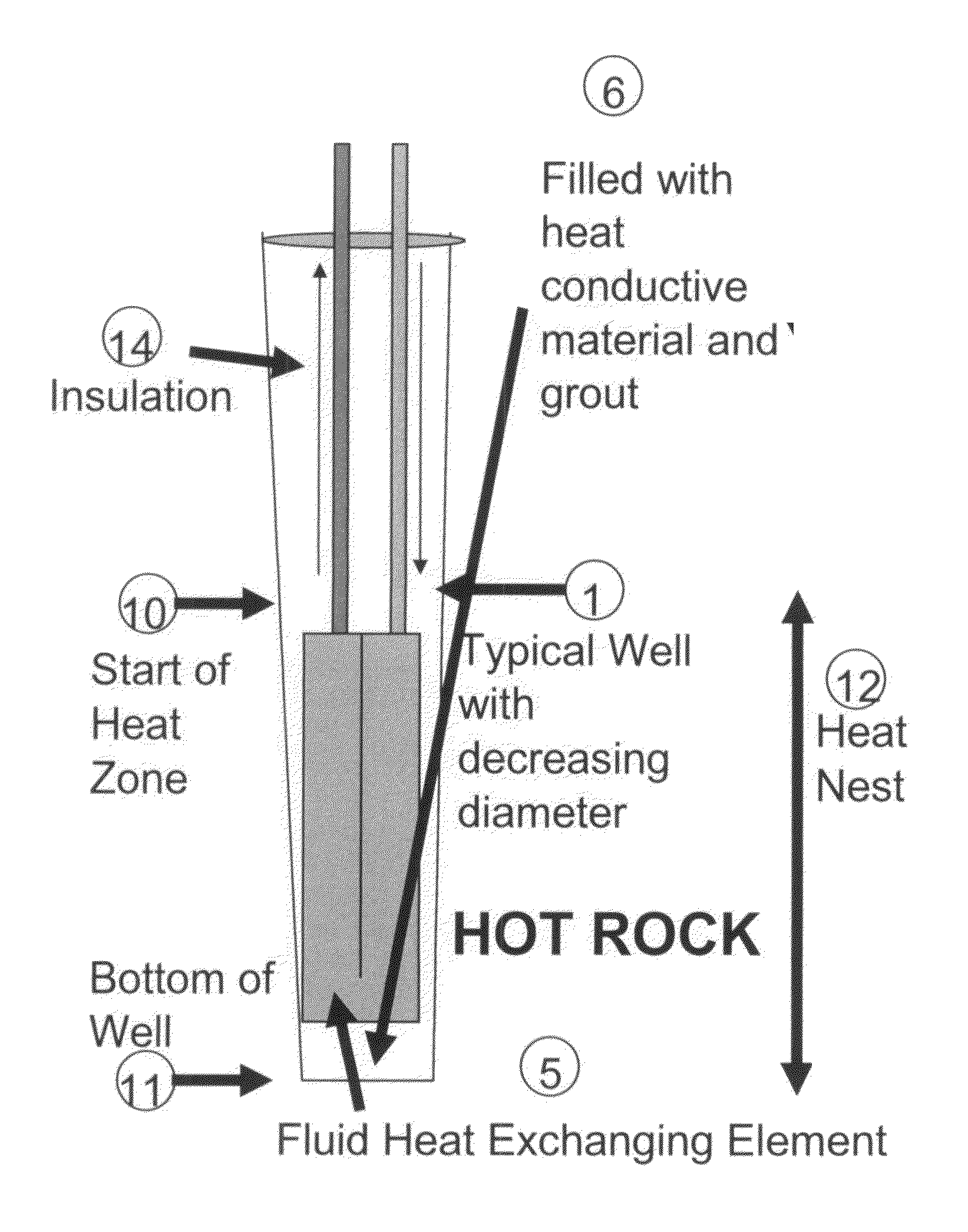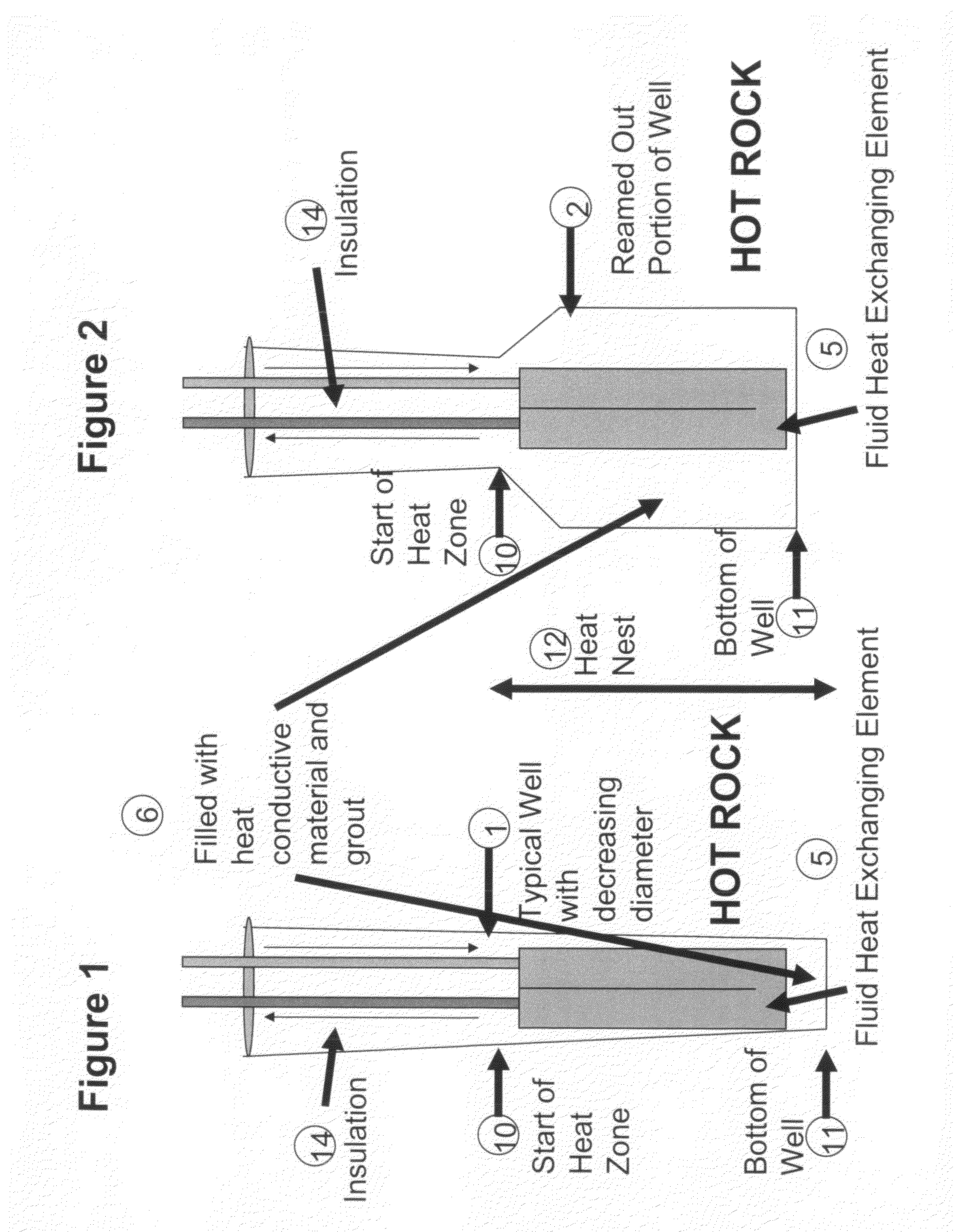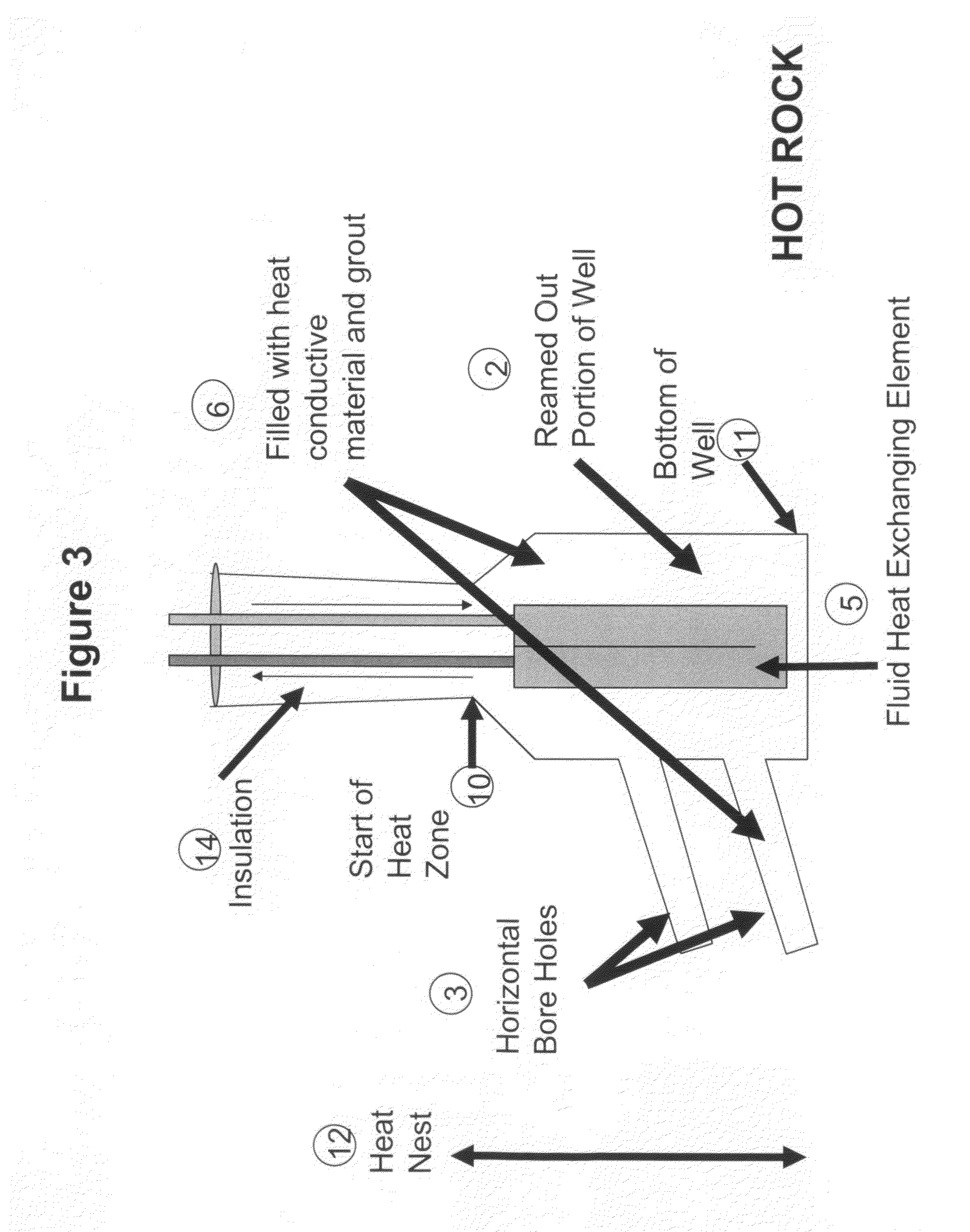System and method of maximizing heat transfer at the bottom of a well using heat conductive components and a predictive model
a technology of heat conductive components and predictive models, applied in geothermal energy generation, collectors with underground reservoirs, light and heating apparatus, etc., can solve problems such as environmental problems, large cost of wells, and abandonmen
- Summary
- Abstract
- Description
- Claims
- Application Information
AI Technical Summary
Benefits of technology
Problems solved by technology
Method used
Image
Examples
second embodiment
[0036]In the second embodiment FIG. 2 the heat equilibrium is increased by reaming out the heat nest length from the start of the heat zone to the length required to achieve the desired heat extraction. This will significantly increase the hot rock surface area and increase the heat equilibrium. After the reaming is complete the steps in FIG. 5 are implemented.
third embodiment
[0037]In the third embodiment FIG. 3 the heat equilibrium is increased by reaming out the heat nest length from the start of the heat zone to the length required and then drilling additional bore holes at a 45 degree angle to the original well bore. This dramatically increases the size of the heat nest and the amount of hot rock surface area. The number of additional bore holes and their positioning relative to the well bore is determined by modelling the hot rock surface environment and determining what is required to deliver the desired heat extraction rate. By increasing the size and the amount of hot rock surface you raise the heat equilibrium. Before the heat nest is prepared the steps in FIG. 5 are implemented.
fourth embodiment
[0038]In the fourth embodiment FIG. 4 the heat equilibrium is increased by reaming out the heat nest length from the start of the heat zone to the length required and then drilling additional bore holes at a 45 degree angle to the original well bore and then cracking the rock (using hydrofracking or other means). This dramatically increases the size of the heat nest and the amount of hot rock surface area. By increasing the size and the amount of hot rock surface you raise the heat equilibrium. Before the heat nest is prepared the steps in FIG. 5 are implemented.
[0039]The heat conductive material used 6 can be metal, plastic, ceramics or any other material that conducts heat well. It can take the form of rods, mesh, foam, particles and balls. The material should be environmentally inert and should resist the caustic environment of the well. In a preferred embodiment the conductive material is in the form of small balls. An example of a material that could be used is steal ball beari...
PUM
 Login to View More
Login to View More Abstract
Description
Claims
Application Information
 Login to View More
Login to View More - R&D
- Intellectual Property
- Life Sciences
- Materials
- Tech Scout
- Unparalleled Data Quality
- Higher Quality Content
- 60% Fewer Hallucinations
Browse by: Latest US Patents, China's latest patents, Technical Efficacy Thesaurus, Application Domain, Technology Topic, Popular Technical Reports.
© 2025 PatSnap. All rights reserved.Legal|Privacy policy|Modern Slavery Act Transparency Statement|Sitemap|About US| Contact US: help@patsnap.com



